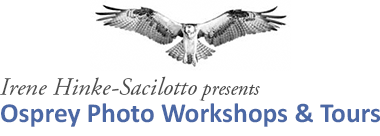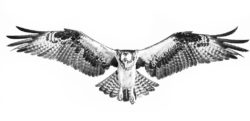Hunting with a Camera – Wildlife Photography
Wildlife Photography Tips – Approaching Wildlife

Wildlife photographers share a lot in common with hunters despite the difference in the final outcome. Both employ similar techniques of approaching wildlife and require knowledge of animal behavior such as where they find the food, water, and shelter. Both photographers and hunters on occasion may use blinds, camo netting, Ghillie suits, decoys, cover scents, and bait where permitted. Camo clothing helps the wearer blend with the environment and masks human form. Learning from duck and big game hunters, I have occasionally used game calls. Manual calls require skill and practice whereas electronic calls are easy to use particularly those with a wireless connection to remote speakers. They attract prey by play recordings varying from moose and elk mating calls to bird songs, gobbling turkey, distress calls to attract predators, and many others. Such hunting supplies are available on websites such as http://www.sportsmansguide.com, www.basspro.com, www.dickssportinggoods.com, or http://www.cabelas.com as well as in their stores.
Talking to local hunters can be quite educational. For instance, they know how to locate animals by their tracks, scat, tunnel trails through vegetation, and other indicator of local activity. Whitetail bucks leave scrapes (disturbed areas) on the ground and rubs on trees marking their territory. Freshly gnawed branches near a beaver dam or lodge and flattened paths leading to the water suggest recent activity in a beaver pond. A game camera placed along a trail can confirm suspicions.
Besides the obvious, a major difference between the hunting and photography is the distance to the target. Hunters can successfully shoot a deer or other animal at distances of 100 to 200 yards. For a photographer, even with a super telephotos lens, the distance of the camera to the subject is often 50 feet or less particularly for ducks and other small animals. When photographing warblers with 600 mm lens and 1.4 tele-converter, the distance of the lens from the subject is often 15 feet or less, near the close focusing limit of the lens (add an extension tube to focus closer). This distance consideration leads to the conclusion that because a photographer is often close to his subject, the animal is likely to be aware of his presence. Therefore, being accepted by your subject in his environment is often more critical than being hidden.

Tips for approaching wildlife
- Emulate your subject’s behavior and movements suggesting that you are just another non-threatening animal sharing the environment.
- As you approach, move slowly, meander, & stop periodically.
- Don’t walk directly towards it.
- Don’t rush forward trying to close the distance between you and it quickly.
- Don’t block an animals escape route or stand in its path. You put your safety at risk.
- Keep a low profile as not to appear a two legged human.
- Use camouflage to blend with the environment and to break-up your outline. Doesn’t have to be an exact match.
- Close distance to the animal by watching its movements. Take an indirect route designed to intersect with its
- When practical, approach from the water by kayak, canoe, boat, or wading. Experience has shown that this often makes you appear less threatening and a curious animal may come closer to you.
- Avoid loud noises – equipment, clothing, rocks being displaced, loud talking, etc.
- Avoid wearing shiny objects, perfumes, and smelly soaps since they are foreign to the environment and may be disturbing.
- Avoid intense direct eye contact. Can be perceived as challenging.
- For animals with a sharp sense of smell, approach from down wind.
- For animals such as bobcats with sharp eyesight, your movement will attract their attention quickly.
- Minimize disrupting the animal’s current behavior.
- If the animal notices you and stops from what it is doing, pretend you are not interested in it. Don’t resume shooting until it returns to its original activity or moves closer to you while engaging in normal behavior. This suggests you are not considered a threat.
- Be ready with your camera for action if another animal approaches the first. This could be an amorous meeting or prelude to a fight.
- From experience I have noticed that speaking softly in a monotone voice to an animal you are photographing seems to have a calming effect on some. What you say does not matter. I suspect it lets them know where you are and that you are not a threat.
- Animals are often more wary on a windy day.
- Carefully observe your subject and try to anticipate what will happen next. The more you know about that species, the better.

An animal’s curiosity often works in the photographer’s favor. For example, when leading a small photo workshop in South Dakota, I spotted a herd of pronghorn some distance away. We decided to see if we could get closer using some of the techniques above. We stopped at a reasonable distance from the pronghorn and took a few photos. To our amazement, the dominant male left the herd and walked to within short distance from us. It stopped, stared at us, turned, and slowly walked away with the females following him. Apparently we did not meet his standards.
No matter where you find animals, even in parks and refuges where they are protected, all wild animals are unpredictable. So exercise caution. No photo is worth your life.





